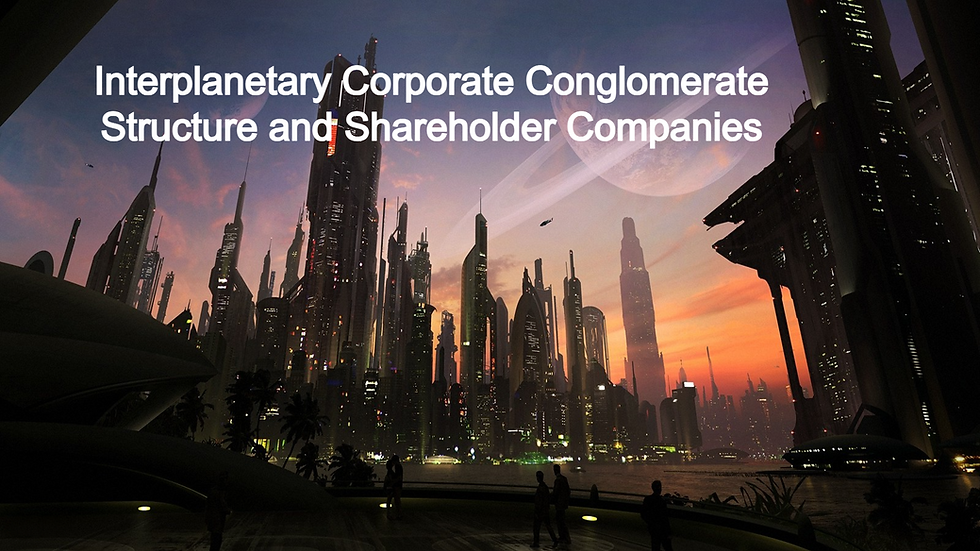Floating sky cities
- Messages from a Star Traveler

- Sep 15, 2024
- 2 min read
Floating sky cities
Floating sky cities utilize advanced technology or engineering allowing a city to float in the sky, either through aerostatic means (like balloons or gas-filled structures), aerodynamic lift (like aircraft or space elevators), or some form of anti-gravity technology.
Such cities could offer various advantages, such as avoiding ground-based natural disasters, reducing pollution in populated areas, and providing unique perspectives of the world below. It would be important to have safe precautions in place including maintaining structural integrity, ensuring a stable environment, and managing resources like energy and water to be able to build floating sky cities.
These floating sky cities are typically envisioned as massive, self-sustaining structures floating above the Earth or in the upper atmosphere. They often leverage advanced technology for propulsion and stability, and they might be designed to address issues such as overpopulation, environmental degradation, or space exploration.
In practice, creating a floating city would involve solving numerous engineering and technological challenges. Concepts like using advanced materials for buoyancy, harnessing renewable energy sources, and designing efficient transportation systems are central to making such a vision feasible.
How floating sky cities would be built
Building floating sky cities would be an ambitious and complex undertaking involving several key technologies and considerations:
Buoyancy and Structural Integrity: To stay aloft, floating cities might use materials with inherent buoyancy, like advanced composites or aerostatic technology (e.g., large helium or hydrogen-filled blimps). Alternatively, they could employ aerostatic lift from large wings or propellers. Structural integrity is crucial, so advanced engineering materials would be needed to withstand atmospheric conditions and the stresses of floating.
Energy Sources: Renewable energy would likely be essential, given the city’s isolated nature. Solar panels, wind turbines, and possibly even space-based solar power could provide the necessary electricity. The city would also need efficient energy storage systems to manage power supply.
Sustainability and Life Support: The city would need systems for water recycling, air purification, and food production. Techniques like hydroponics or aeroponics for growing food and advanced waste management systems would be crucial. Maintaining a stable environment would involve controlling temperature, humidity, and air quality.
Transportation and Connectivity: Transportation within the city could involve electric or autonomous vehicles, and connections to the ground might be managed through airships, high-speed elevators, or other innovative methods. Connectivity to the outside world could rely on advanced communication technologies, including satellite links.
Construction Materials and Techniques: Building materials would need to be lightweight yet durable. Modular construction techniques could be used to assemble parts of the city in the air. Innovative methods like 3D printing or robotic assembly could be employed to reduce human labor and increase precision.
Safety and Regulations: Ensuring the safety of inhabitants would be a major concern. This includes designing for weather events, structural failure, or other emergencies. International regulations and cooperation would likely be necessary to manage airspace and safety standards.
Economic and Social Considerations: Establishing a floating city would require significant investment and international collaboration. Economic models would need to be developed to support the city’s maintenance and growth, and social systems would need to be designed to ensure quality of life and effective governance.
In summary, while building floating sky cities involves complex and advanced technology, it represents an exciting frontier in human innovation and engineering.




Comments